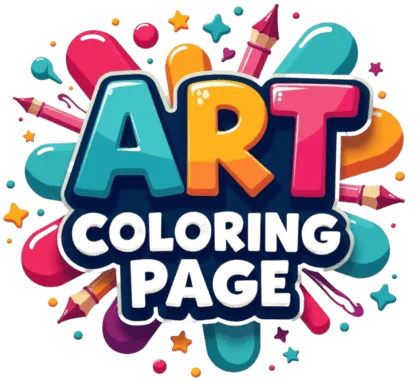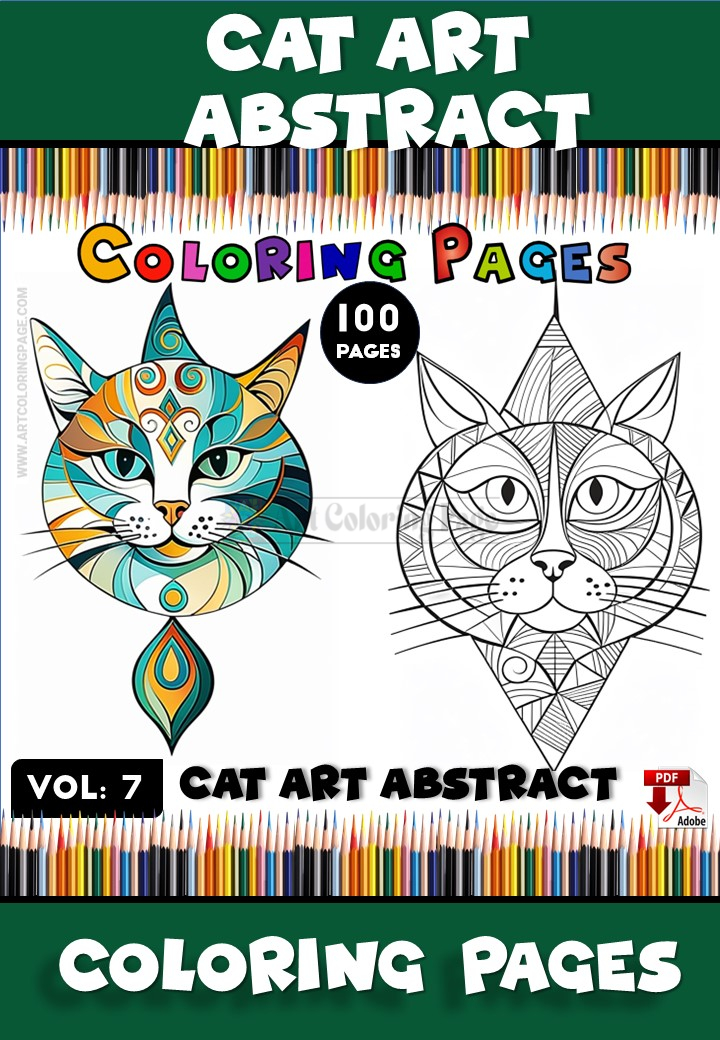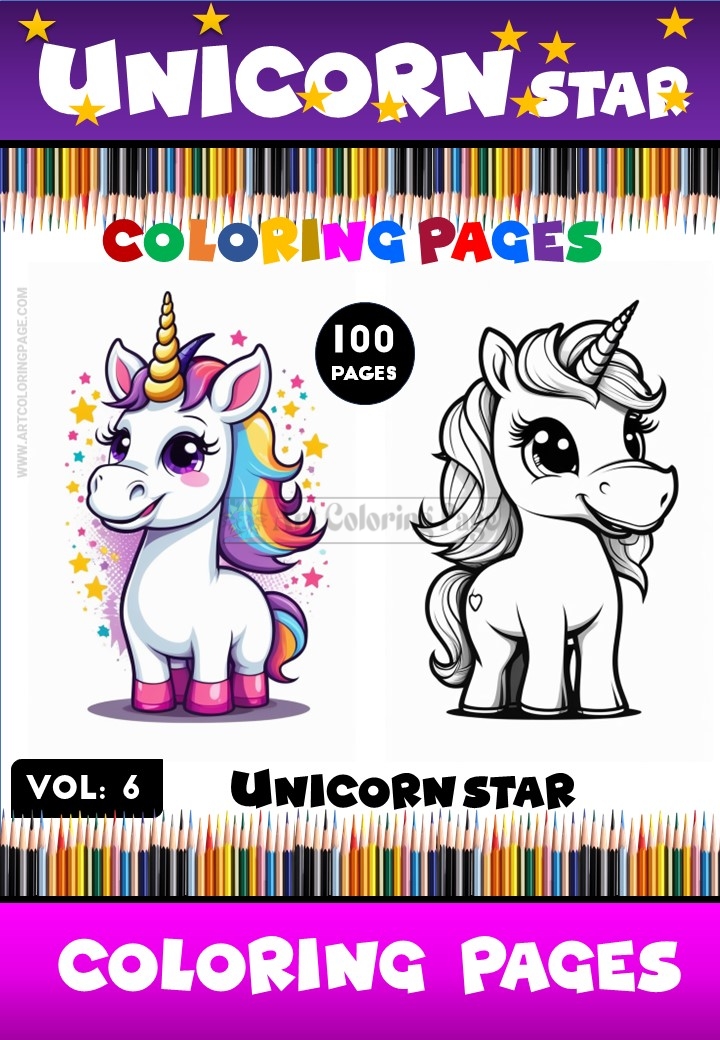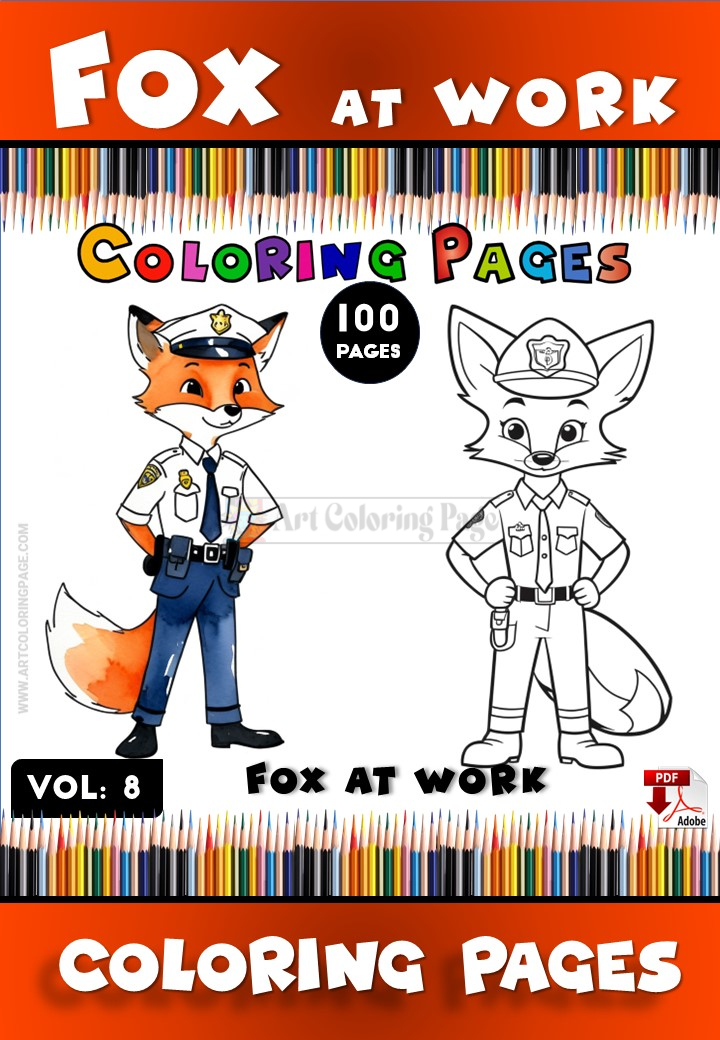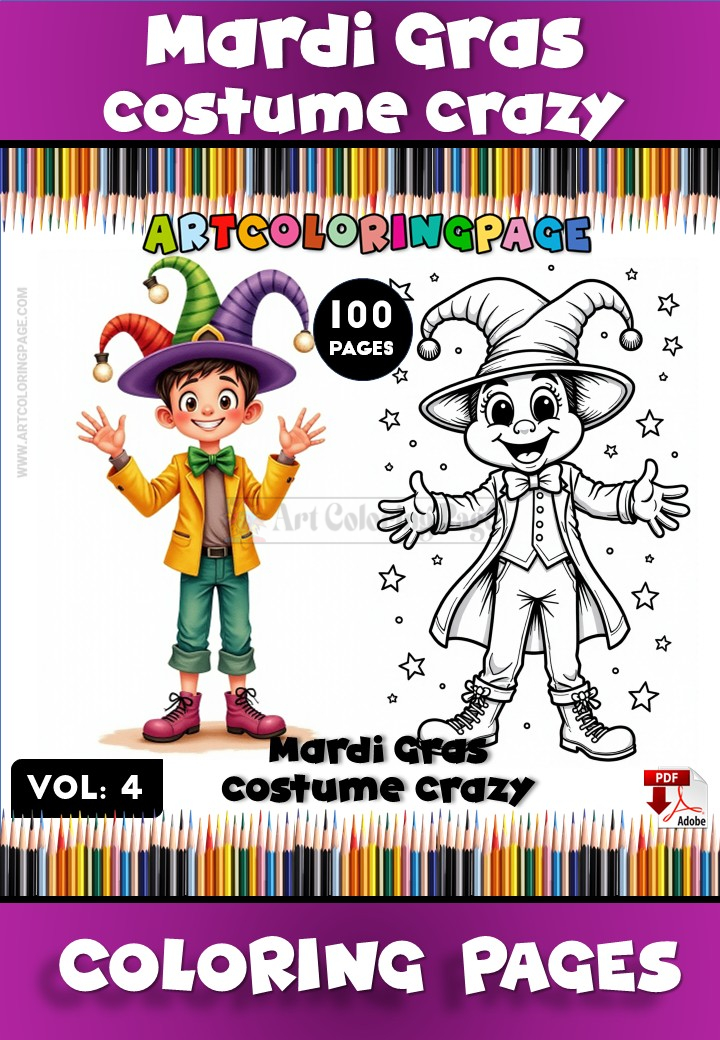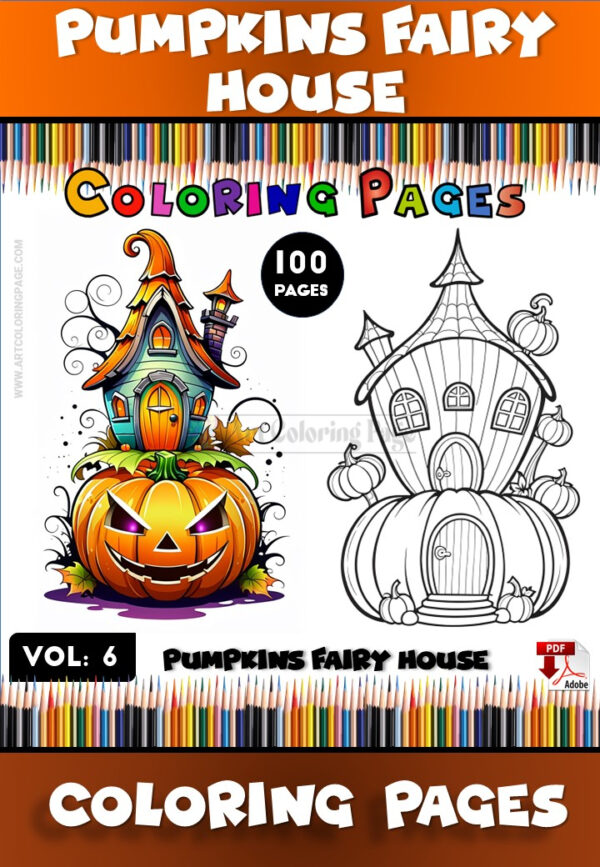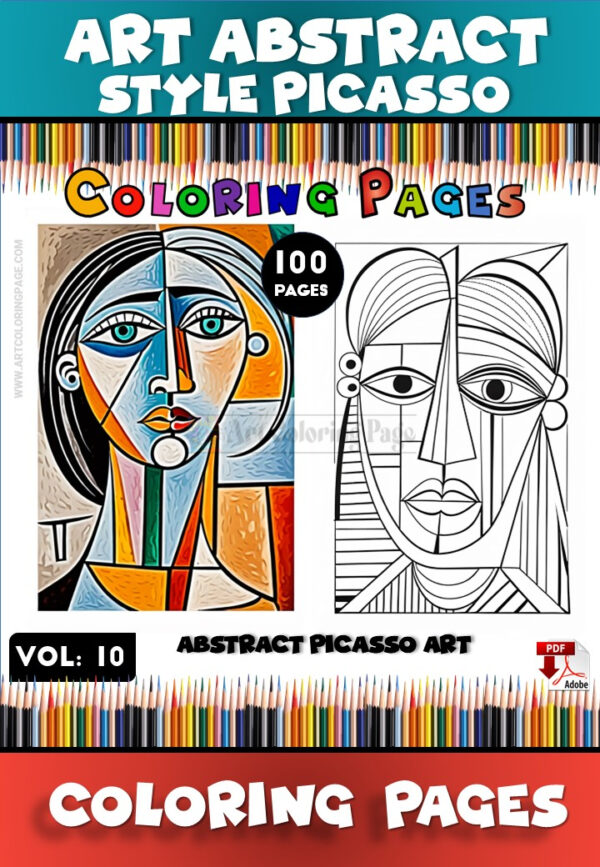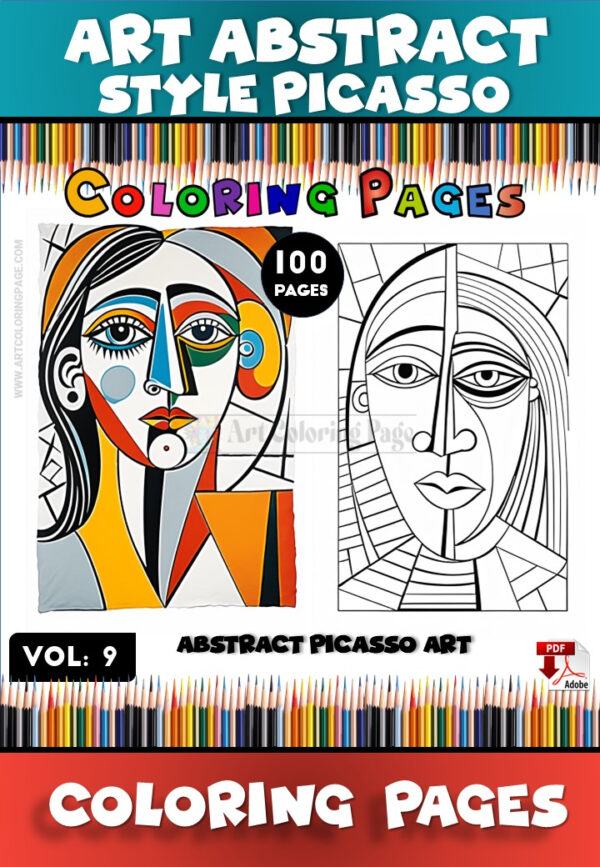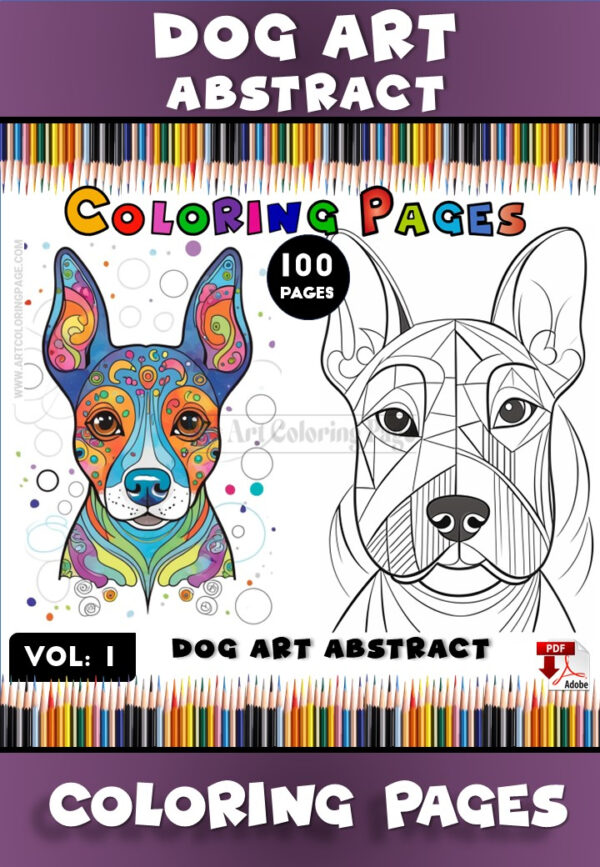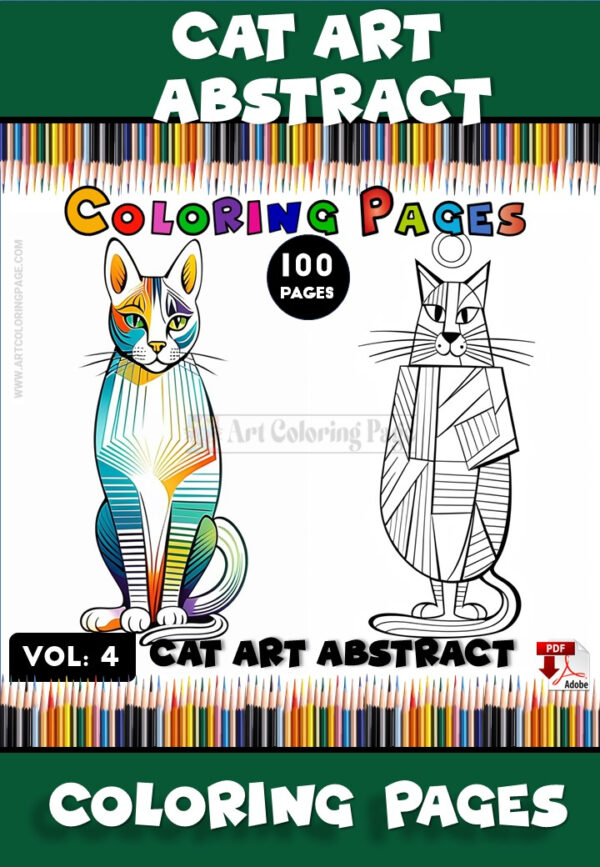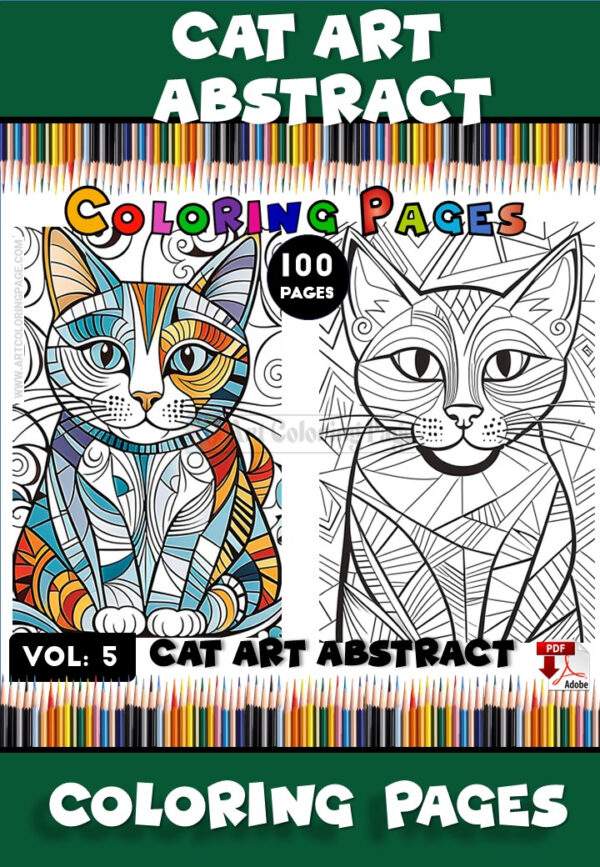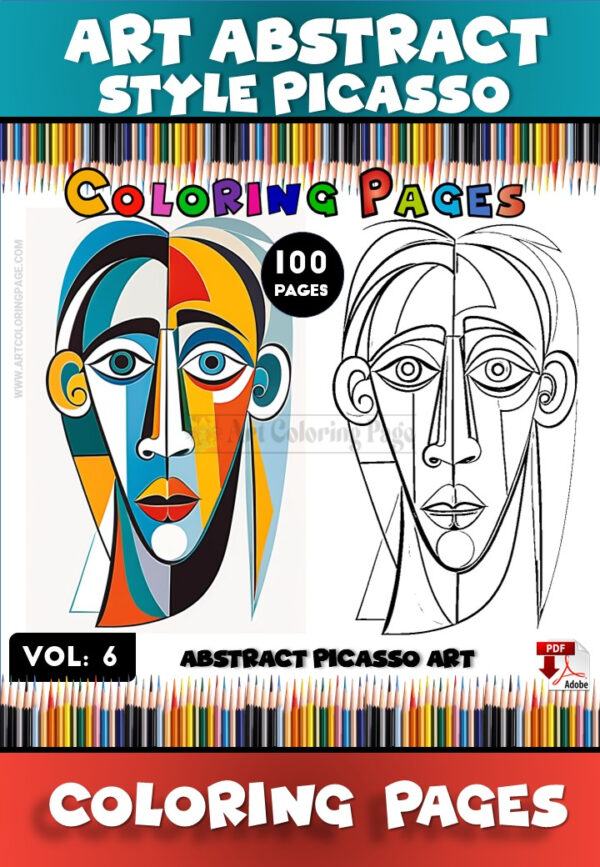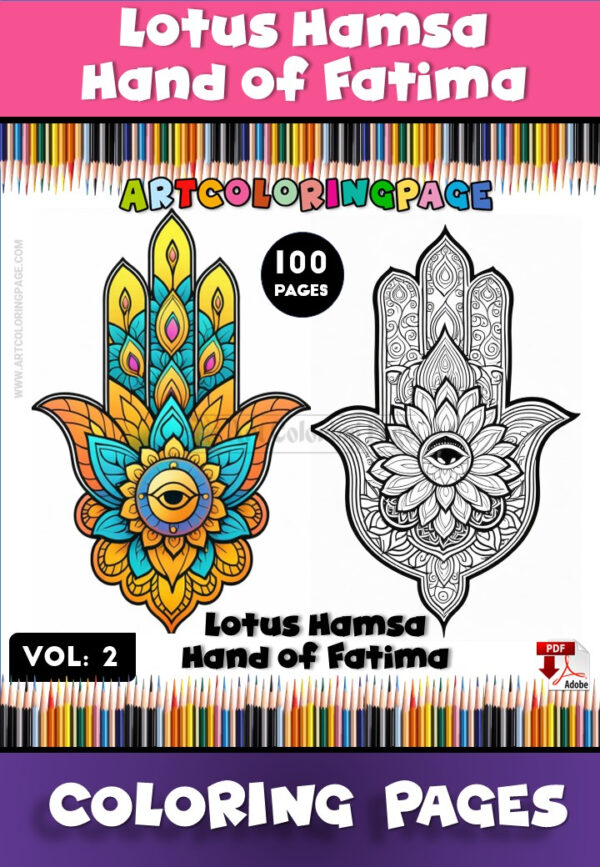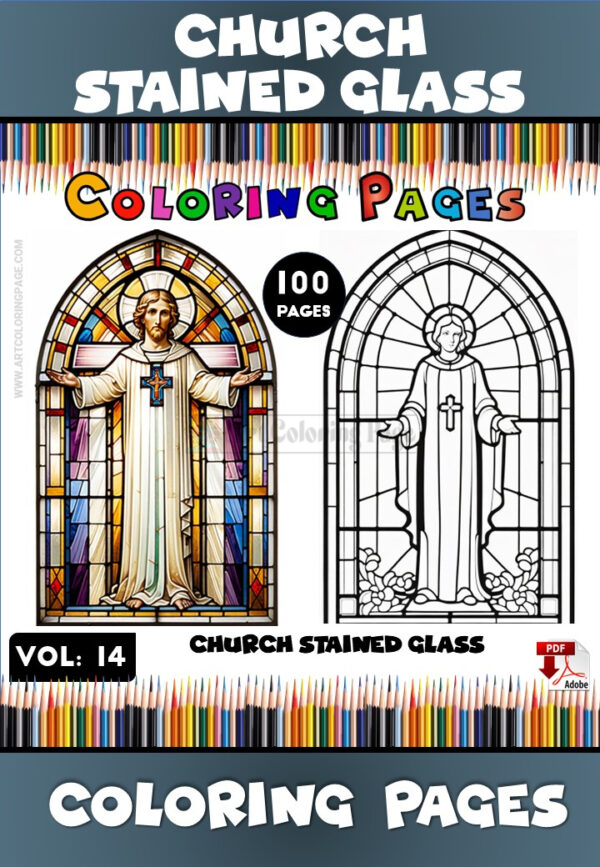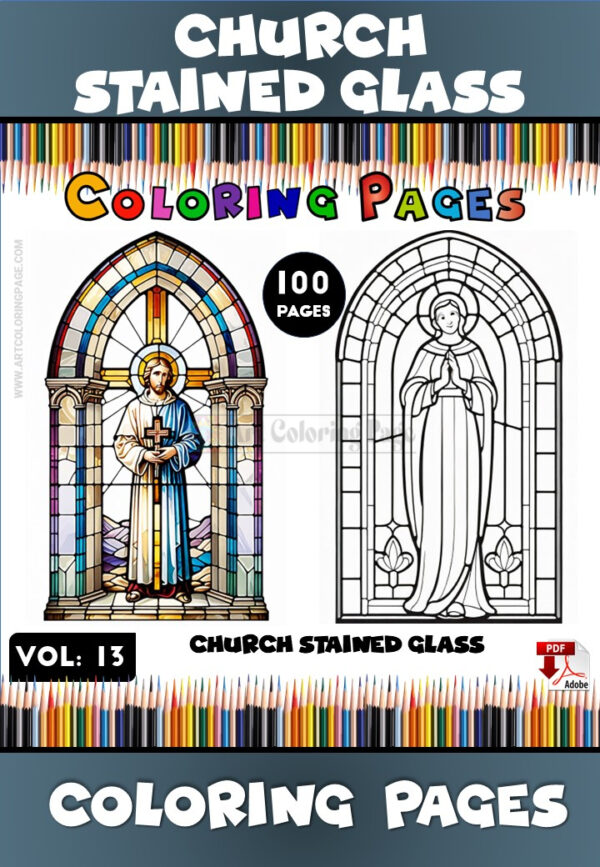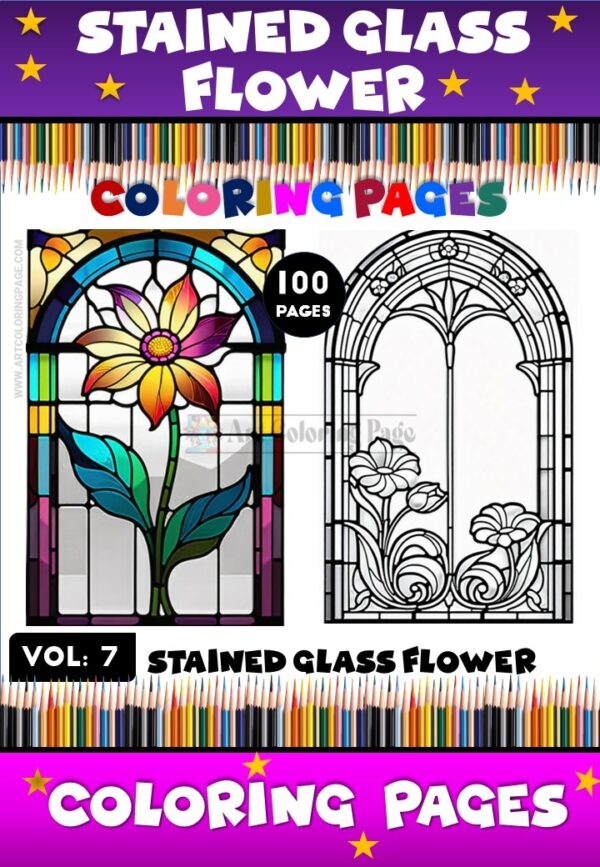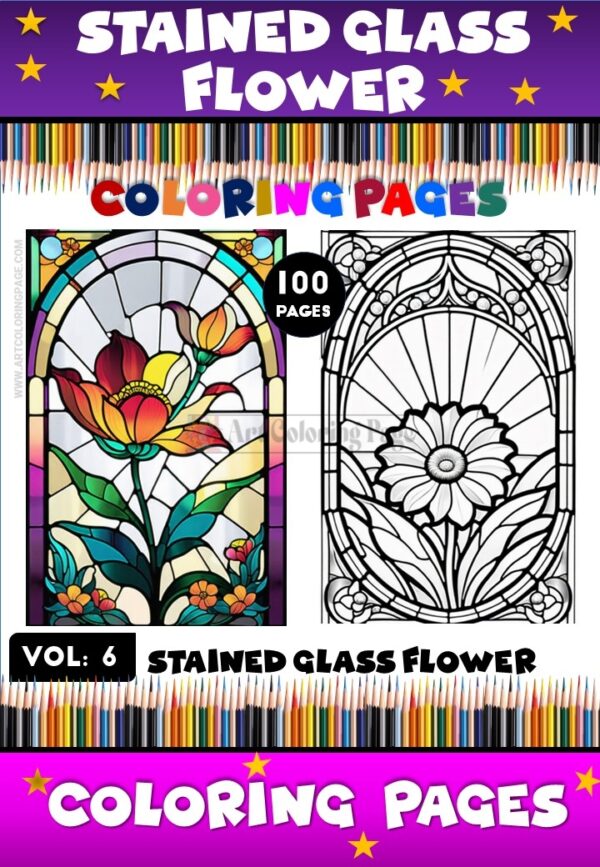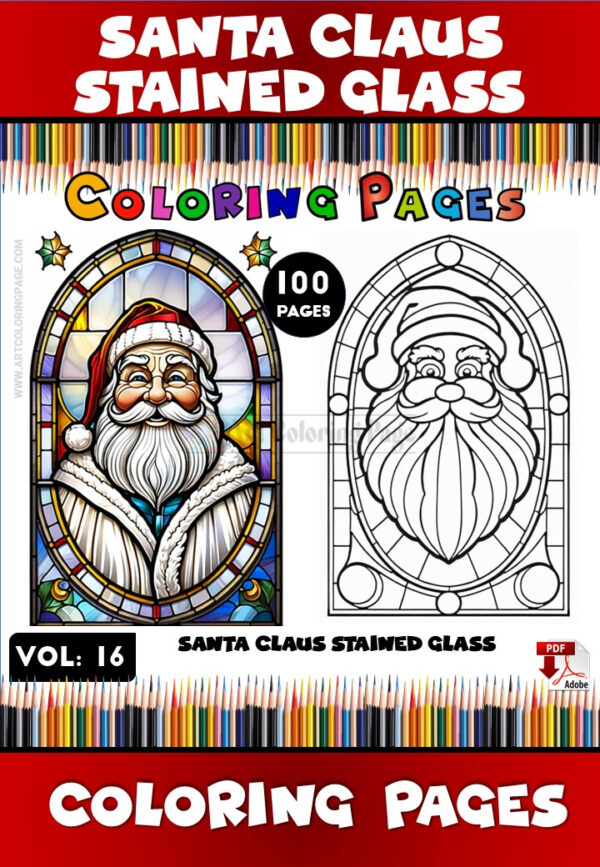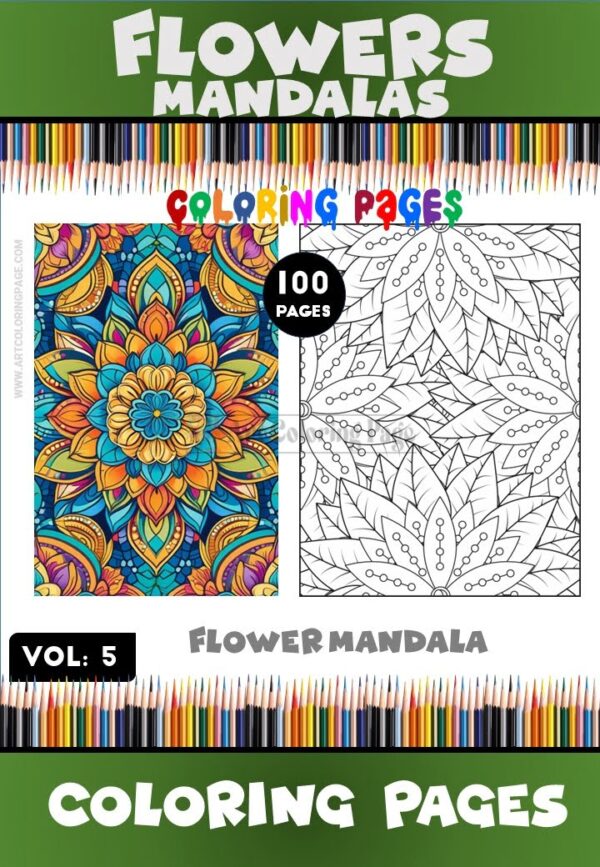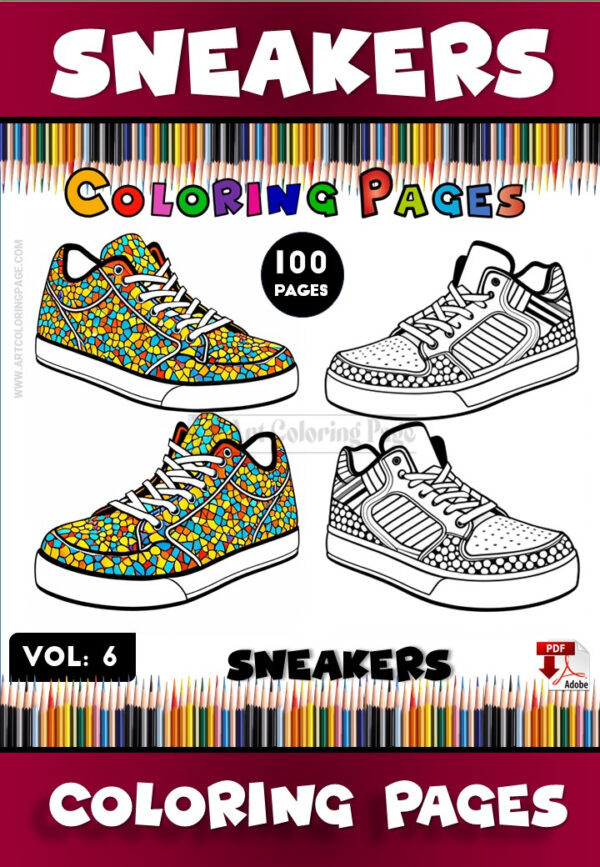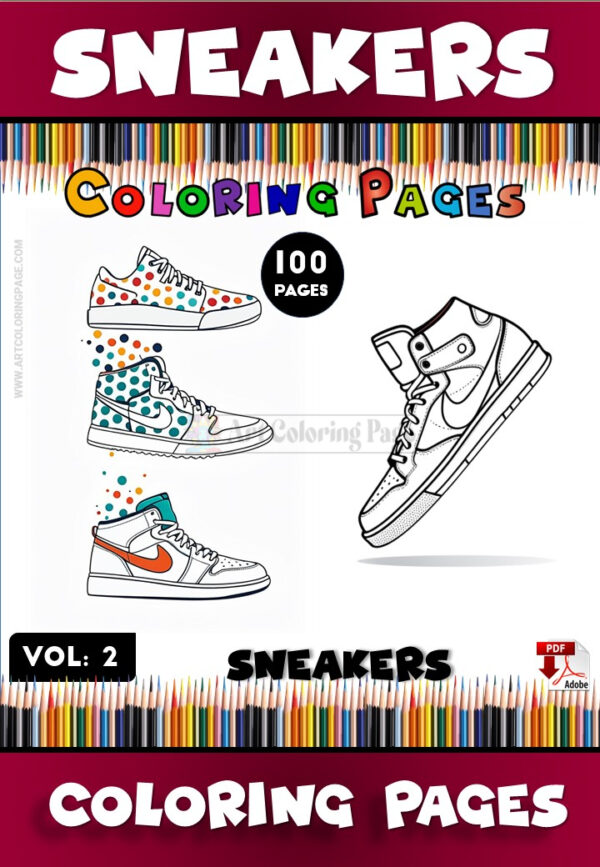Blogs coloring page
Finding the Best Adult Coloring Books: Your Guide to Creative Calm
Discover the best adult coloring books for relaxation & creativity! Explore top themes, quality features, artist styles & coloring techniques. Find your perfect mindful escape. Includes info on printables from artcoloringpage.com. Start your colorful journey today!
Rediscovering Color in a Complex World
In an era often characterized by digital saturation, constant connectivity, and mounting daily pressures, a surprisingly simple, analog activity has surged in popularity, capturing the attention and imagination of millions of adults worldwide: coloring. Yes, the pastime many of us fondly remember from childhood has been reborn, emerging as a powerful tool for relaxation, creative expression, and mindfulness for grown-ups. The rise of best adult coloring books signifies more than just a fleeting trend; it reflects a collective yearning for moments of peace, a desire to engage our hands and minds in something tangible and beautiful, and a rediscovery of the simple joy of creating. These aren’t your childhood cartoon character books; modern coloring books for adults feature intricate designs, sophisticated themes, and high-quality paper, transforming coloring into a legitimate artistic and therapeutic pursuit.
From complex mandalas and serene nature scenes to fantastical worlds and pop culture icons, the variety available is astounding, catering to every possible taste and skill level. But what truly elevates a coloring book from a simple collection of outlines to one of the “best”? It’s a combination of factors: the quality of the paper, the style and intricacy of the illustrations, the binding, and the overall experience it provides. Finding the right book can be the key to unlocking the profound benefits this activity offers – stress reduction, improved focus, a meditative state of flow, and the sheer satisfaction of bringing a black and white page to vibrant life.
This comprehensive guide will navigate the colorful landscape of adult coloring. We’ll explore why this phenomenon has taken hold, delve into the tangible benefits it offers for mental well-being, and establish clear criteria for identifying the truly best adult coloring books amidst the vast selection. We will journey through popular themes and artistic styles, touch upon essential tools and techniques to enhance your experience, and even explore the burgeoning world of printable coloring pages – highlighting artcoloringpage.com as the premier source for high-quality printable options. Whether you’re a seasoned colorist seeking your next favorite book or a curious newcomer wondering where to begin, consider this your map to finding creative calm and unleashing your inner artist, one page at a time.
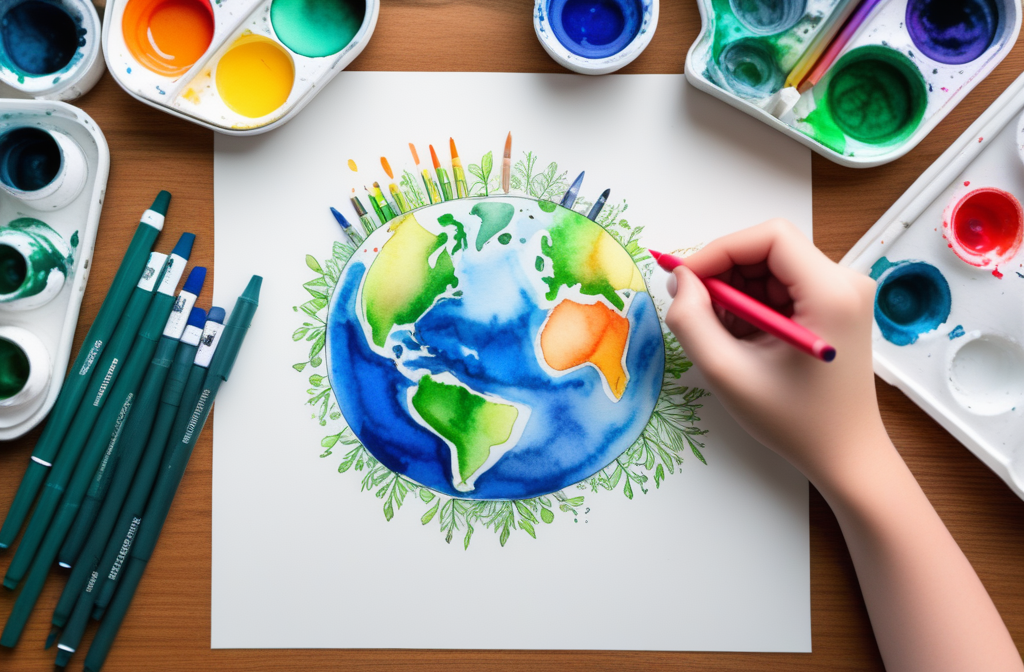
The Phenomenon Explained: Why Grown-Ups Are Coloring Again
The explosion of adult coloring onto the mainstream scene a few years ago might have seemed sudden, but its roots tap into deep-seated human needs and contemporary societal pressures. It wasn’t just a random fad; it was a response. Adults didn’t suddenly decide coloring was cool; rather, they rediscovered its inherent value in the context of modern life. Understanding why millions of grown-ups embraced crayons, pencils, and markers again helps appreciate the significance of finding the best adult coloring books to facilitate this experience.
One primary driver is the search for effective stress relief. In a world that often feels overwhelming, the simple, focused act of coloring provides an accessible escape. It requires concentration, drawing the mind away from anxieties and ruminations, and anchoring it in the present moment. The repetitive, rhythmic motions can be inherently soothing, calming the nervous system in a way similar to meditation or knitting. Unlike more demanding hobbies, coloring has a low barrier to entry – no complex skills are required initially, just a willingness to engage with color and line.
Nostalgia also plays a role. For many, coloring evokes fond memories of childhood, a time often perceived as simpler and less stressful. Engaging in this familiar activity can provide a sense of comfort and security, a gentle regression to a state of playful creativity. Furthermore, in our increasingly digital world, adult coloring offers a much-needed analog antidote. It provides a tactile experience, a break from screens, notifications, and the constant influx of information. It allows individuals to create something tangible and beautiful with their own hands, offering a sense of accomplishment that digital interactions often lack. The accessibility and affordability of coloring books compared to other art forms or therapeutic activities also contribute significantly to their widespread adoption. It’s a simple, democratic form of creative self-care.
Mindfulness in Motion: The Therapeutic Power of Coloring
Beyond simple stress relief, one of the most significant reasons for the enduring popularity of adult coloring lies in its profound connection to mindfulness and its associated therapeutic benefits. While not a replacement for professional therapy, engaging with the best adult coloring books can serve as a powerful tool for cultivating mindfulness, reducing anxiety, and promoting emotional well-being. Mindfulness, at its core, is about paying attention to the present moment without judgment. Coloring intricate designs naturally facilitates this state.
The act requires focus. You need to concentrate on choosing colors, staying within the lines (or consciously deciding to go outside them), and observing the patterns emerge. This focused attention gently pushes aside the mental clutter – the worries about the future, regrets about the past, or the endless stream of self-criticism that often occupies our minds. As neuroscientist Dr. Stan Rodski noted in relation to his own line of coloring books, the activity engages parts of the brain related to concentration and fine motor skills, while relaxing the amygdala, the brain’s fear center. The repetitive nature of coloring patterns, especially symmetrical designs like mandalas, can induce a state of flow – a feeling of being fully immersed and energized in an activity, often associated with deep enjoyment and creativity.
Art therapy has long recognized the value of creative expression for processing emotions and improving mental health. While coloring pre-drawn designs isn’t the same as free-form art therapy, it shares some benefits. It provides a non-verbal outlet for expression through color choice and application. The structure of the coloring page can feel safe and containing, reducing the anxiety sometimes associated with a blank canvas. It allows for a sense of control and accomplishment as the page is completed, boosting self-esteem. Many individuals report feeling calmer, more centered, and less anxious after a coloring session. It acts as a form of active meditation, quieting the mind through focused engagement rather than passive observation, making the search for high-quality, engaging coloring books a worthwhile endeavor for mental wellness.
Unplug and Unwind: Coloring as a Digital Detox
In an age dominated by screens – smartphones, tablets, computers, televisions – our eyes and minds are constantly bombarded with blue light, notifications, and an endless stream of digital information. This hyper-connectivity contributes to eye strain, sleep disruption, anxiety, and a feeling of being perpetually “on.” The rise of adult coloring offers a welcome and necessary antidote: a genuine opportunity to unplug, unwind, and engage in a deeply analog activity. Finding the best adult coloring books becomes part of a conscious choice to step away from the digital deluge and reconnect with the physical world.
Coloring requires no screens, no Wi-Fi, no charging cables. It involves the simple, tactile interaction between hand, tool, and paper. This physical engagement can be incredibly grounding. Feeling the texture of the paper, the smoothness of a pencil, or the flow of ink from a marker provides sensory feedback that is often missing in our digital interactions. It encourages us to slow down. Unlike scrolling through social media or rapidly switching between apps, coloring demands patience and deliberate action. This slower pace allows the mind to relax and decompress.
Taking a dedicated break from screens to color can improve focus and reduce mental fatigue. Staring at intricate patterns on paper engages the brain differently than processing digital content, potentially enhancing concentration skills over time. Furthermore, coloring before bed, instead of scrolling through a phone, can promote better sleep. It avoids exposure to stimulating blue light and helps signal to the brain that it’s time to wind down. The act itself is calming, preparing the mind and body for rest.
This deliberate stepping away from technology, even for short periods, constitutes a form of digital detox. It allows for mental space, reduces overstimulation, and fosters a connection with a tangible creative process. The satisfaction of completing a colored page provides a sense of accomplishment that feels different – perhaps more earned and personal – than achieving a digital goal. Adult coloring books, therefore, are not just about art or stress relief; they are tools for reclaiming focus, tranquility, and a connection to the physical act of creation in our digitally saturated lives.
Defining “Best”: Key Qualities of Top-Tier Adult Coloring Books
With thousands of adult coloring books flooding the market, the term “best” can feel subjective. However, certain objective qualities consistently distinguish exceptional books from mediocre ones. Understanding these criteria is crucial when searching for the best adult coloring books that will provide the most enjoyable and rewarding experience, especially considering the time and effort you’ll invest in coloring them. It’s not just about liking the pictures; it’s about the overall quality of the product and how well it facilitates the act of coloring.
Key factors include the quality and weight of the paper, the type of binding used, the intricacy and style of the designs, the thematic coherence, and sometimes the reputation of the artist or publisher. A book might have stunning illustrations, but if the paper is thin and markers bleed through, or if the binding makes it impossible to color near the spine, the experience can quickly become frustrating. Conversely, a book with simpler designs might be perfect for relaxation if printed on luxurious paper that takes colored pencils beautifully.
Evaluating these elements helps you make informed choices based on your preferred coloring mediums, your desired level of challenge, and how you plan to use the finished pages (e.g., keeping them in the book vs. removing them for display). Let’s break down the essential components that contribute to a truly top-tier adult coloring book.
Paper Matters Most: Preventing Bleed-Through and Enhancing Medium Performance
Arguably the single most critical factor determining the quality and versatility of an adult coloring book is its paper. The right paper can elevate the coloring experience, allowing mediums to perform at their best, while poor paper can lead to frustration and ruined artwork. When searching for the best adult coloring books, paying close attention to paper specifications is paramount.
- Paper Weight (GSM): This is often measured in grams per square meter (GSM) or pounds (lb). Standard office paper is typically around 80 GSM (20 lb). For adult coloring books, especially if you plan to use markers or heavier applications of pencil, you need significantly thicker paper. Look for books with paper weight of at least 120 GSM (approx. 80 lb cover stock), with weights of 150 GSM (100 lb) or even higher being ideal for preventing bleed-through, particularly from alcohol markers or gel pens. Thicker paper also feels more substantial and luxurious.
- Bleed-Through: This occurs when ink from markers or pens soaks through the paper to the other side. It’s the bane of many colorists. Thick, less porous paper minimizes this. Many high-quality books feature single-sided printing – illustrations are printed on only one side of each sheet, often with the reverse side blank or featuring a simple pattern or quote. This provides insurance against bleed-through ruining another design. If a book is double-sided, exceptionally thick paper is essential, or you may need to stick primarily to colored pencils.
- Paper Texture (Tooth): Paper isn’t perfectly smooth; it has a subtle texture called “tooth.” Paper with more tooth (a slightly rougher surface) grips pigment from colored pencils better, allowing for more layers and richer blending. Smoother paper might be preferable for markers as it allows ink to flow evenly, but it can be harder to layer pencils effectively. The ideal tooth often depends on your preferred medium.
- Paper Color: Most books use white paper, ranging from bright white to a softer off-white or cream. Bright white makes colors pop, while cream can offer a warmer, slightly vintage feel. This is largely a matter of personal preference.
Reading reviews often provides valuable insights into paper quality, specifically mentioning how it handles different mediums like alcohol markers (notorious for bleeding) or layered colored pencils. Investing in a book with superior paper ensures your tools perform optimally and your creative efforts aren’t undermined by technical limitations, a hallmark of the Greatest adults colouring pages.
Binding Decisions: Lay-Flat Convenience vs. Standard Spines
How a coloring book is bound significantly affects its usability and your comfort while coloring. While it might seem like a minor detail, the binding determines how easily the book lies flat, how accessible the areas near the spine are, and whether pages can be easily removed. Considering the binding is an important step in selecting the best adult coloring books for your needs.
- Perfect Binding (Glued Spine): This is the most common type of binding found in standard paperbacks. Pages are glued together at the spine.
- Pros: Looks neat on a bookshelf, generally durable.
- Cons: These books rarely lie completely flat without “breaking” the spine (which can damage the book). Coloring near the inner margin (the gutter) can be difficult and uncomfortable, often requiring you to hold the page down with one hand while coloring with the other. Images that span across two pages (double-page spreads) can be particularly challenging as the center part may be obscured or distorted by the curve into the spine.
- Spiral Binding (Wire-O or Coil): Pages are punched and held together by a wire or plastic coil.
- Pros: Excellent lay-flat capability – the book can be opened 360 degrees and lies perfectly flat on any page. This provides maximum comfort and accessibility, especially for coloring near the inner edge or for left-handed colorists.
- Cons: Can be slightly bulkier on a shelf. Pages might occasionally catch on the spirals. Some people find the look less aesthetically pleasing than a perfect-bound book.
- Top-Bound Binding: Similar to spiral binding, but the coil or glue is along the top edge, like a notepad.
- Pros: Lies flat easily. Equally comfortable for right- and left-handed users. Pages are often easily removable.
- Cons: Less common for full-sized coloring books, more often seen in smaller postcard or journal formats.
- Perforated Pages: Regardless of the main binding type (though often found in perfect-bound books), pages with a perforated line near the spine allow for easy and clean removal.
- Pros: Ideal if you want to frame your finished work, scan it, gift it, or simply color on a single sheet using a clipboard without the bulk of the book. Helps mitigate the lay-flat issues of perfect binding, as you can remove the page before coloring.
- Cons: Pages might detach accidentally if the perforation is too weak or handled roughly.
The ideal binding often depends on personal preference. However, for maximum comfort and ease of coloring, spiral-bound books or books with perforated pages (especially if perfect-bound) are generally considered superior features found in many of the best adult coloring books.
Design Intricacy and Artistic Style: Finding Your Creative Match
Beyond the physical construction, the heart of any adult coloring book lies in its illustrations. The level of detail, the subject matter, and the overall artistic style are crucial factors in determining whether a book is a good fit for you. The best adult coloring books offer designs that are not only beautiful but also align with the colorist’s preferences, skill level, and desired experience – whether that’s intricate focus or relaxed simplicity.
- Level of Intricacy: Designs range dramatically:
- Highly Intricate: Featuring tiny details, complex patterns, fine lines, and dense compositions (e.g., detailed mandalas, elaborate fantasy scenes, illustrations packed with hidden objects). These require significant time, patience, fine-tipped tools (sharpened pencils, fine-liners), and good eyesight. They offer a deep sense of immersion and accomplishment but can be overwhelming for beginners or those seeking quick relaxation.
- Moderate Detail: A good balance with clear subjects, defined spaces, and some detailed areas mixed with larger spaces. Common in nature themes (florals, animals) and many pattern books. Suitable for a wide range of skill levels and offer flexibility in coloring approach.
- Simple/Bold Designs: Characterized by thicker lines, larger open spaces, and less intricate detail. Often found in books with graphic patterns, cartoon styles, or those specifically designed for relaxation or beginners. Allow for faster completion, experimentation with broad color application (markers), and are less demanding visually and technically.
- Artistic Style: Different artists bring unique styles:
- Realistic: Aiming for lifelike depictions of animals, people, or objects.
- Stylized/Illustrative: A common style featuring clear outlines but with artistic interpretation rather than strict realism (e.g., Johanna Basford’s whimsical nature).
- Abstract/Geometric: Focusing on patterns, shapes, and non-representational designs.
- Cartoon/Whimsical: Cute, humorous, or fantastical characters and scenes.
- Zentangle/Doodle Art: Incorporating structured, repetitive patterns within larger shapes.
- Subject Matter/Theme: Consider what subjects you enjoy looking at and coloring. Mandalas, flowers, animals, fantasy creatures, landscapes, architecture, food, fashion, inspirational quotes, humorous scenes – the options are vast. Choosing a theme you connect with enhances the enjoyment.
The “best” level of intricacy and style is subjective. Some days you might crave a complex challenge, other days a simple pattern. Trying different styles, perhaps through printable pages first (like those from artcoloringpage.com), can help you discover your preferences before investing in multiple Top adults colouring pages.
A World of Themes: Exploring Best adult coloring books
One of the most exciting aspects of the adult coloring boom is the incredible diversity of themes available. Gone are the days when coloring books were limited to simple cartoons or basic shapes. Today, the top adults colouring pages cater to virtually every interest imaginable, offering intricate and engaging illustrations across a wide spectrum of genres. This thematic variety ensures that coloring remains a fresh and appealing activity, allowing individuals to choose subjects that resonate personally with their passions, moods, or desire for escapism.
Whether you find solace in the symmetry of mandalas, delight in the details of the natural world, lose yourself in fantastical realms, or get a kick out of coloring pop culture icons, there’s a coloring book designed for you. Exploring these popular themes can help you identify genres you might enjoy or introduce you to new areas of creative exploration. Let’s delve into some of the most beloved and enduring themes found within the pages of coloring books for grown-ups.
Mandalas and Geometric Patterns: Finding Focus in Symmetry
Among the most popular and enduring genres in adult coloring are mandalas and geometric patterns. There’s a profound appeal in their symmetry, repetition, and often intricate detail that resonates deeply with those seeking focus, relaxation, and a meditative coloring experience. Mandalas, originating from Hindu and Buddhist traditions, are spiritual symbols representing the universe, often used as tools for meditation and spiritual guidance. In the context of best adult coloring books, they retain this meditative quality.
- Symmetry and Order: The inherent symmetry in mandalas and geometric patterns provides a sense of visual order and balance, which can be inherently calming to the mind. Coloring these designs involves working with repeating elements, creating a rhythmic and predictable process that encourages focus and helps quiet mental chatter.
- Focus Point: Mandalas typically radiate outwards from a central point. This structure naturally draws the eye inward, promoting concentration and helping the colorist become absorbed in the activity, facilitating a state of mindfulness or flow.
- Intricacy and Detail: Mandala coloring pages often feature fine lines and complex interlocking shapes. Filling these small spaces requires careful attention and precise movements, further enhancing focus and providing a satisfying challenge for those who enjoy detailed work.
- Creative Freedom within Structure: While the lines provide a clear structure, the choice of colors and how they are arranged within the symmetrical pattern offers immense creative freedom. Colorists can create harmonious palettes, explore contrasting colors, or develop intricate color gradients across the repeating sections, resulting in visually stunning and unique outcomes.
- Variety: While traditional mandalas have specific structures, the genre in coloring books is broad. It includes classic circular designs, square patterns, star shapes, and even mandalas incorporating floral, animal, or abstract motifs within their symmetrical framework. Geometric pattern books offer similar benefits through tessellations, abstract shapes, optical illusions, and complex line work.
Coloring mandalas and geometric patterns is often recommended for stress relief and anxiety reduction precisely because the structured, repetitive nature of the task provides a calming anchor for the mind. It’s less about representing something external and more about engaging in a process that fosters inner calm and focused creativity, making them a cornerstone of the adult coloring movement.
Nature’s Palette: Floral Arrangements, Animal Kingdoms, and Landscapes
Nature themes are consistently among the most sought-after and beloved subjects in the realm of best adult coloring books. Our innate connection to the natural world makes flora, fauna, and landscapes deeply appealing and satisfying subjects to bring to life with color. These books offer a way to appreciate the beauty and complexity of nature, even from the comfort of home.
- Floral Designs: Flowers are a perennial favorite. Coloring books feature everything from single, detailed botanical illustrations of specific species (roses, lilies, orchids) to intricate bouquets, wreaths, garden scenes, and repeating floral patterns. The organic shapes, delicate petals, and potential for vibrant color combinations make flowers endlessly engaging. Coloring them can be both relaxing and educational, potentially sparking an interest in botany or gardening.
- Animal Kingdoms: From domestic pets like cats and dogs to majestic wildlife (lions, tigers, elephants, wolves), birds of paradise, intricate insects (butterflies, dragonflies), and underwater creatures (fish, dolphins, coral reefs), animal-themed coloring books are incredibly popular. They allow colorists to explore different textures (fur, feathers, scales), patterns (stripes, spots), and anatomical details. Realistic depictions offer a chance to study animal forms, while more stylized or patterned animal designs provide creative freedom.
- Landscapes and Scenery: These books transport colorists to different environments – serene forests, majestic mountains, tranquil beaches, charming countrysides, or even detailed cityscapes. Coloring landscapes involves working with perspective, light, and shadow to create depth and atmosphere. It requires blending colors for skies, water, and foliage, offering a different kind of challenge and reward compared to single-subject pages.
- Connection and Appreciation: Engaging with nature themes through coloring can foster a deeper appreciation for the environment and its inhabitants. Spending time carefully coloring the veins on a leaf, the pattern on a butterfly’s wing, or the fur of an animal encourages close observation and mindfulness of nature’s intricate designs.
The sheer diversity within nature themes ensures broad appeal. Whether you prefer the delicate details of a single flower, the challenge of rendering realistic animal fur, or the atmospheric depth of a landscape, nature-themed coloring books provide a rich and rewarding connection to the world around us, making them a staple in the collections of many colorists.
Escapist Realms: Fantasy, Sci-Fi, and Whimsical Worlds
For those whose imaginations love to wander beyond the everyday, fantasy, science fiction, and whimsical themes offer the perfect escape within the pages of best adult coloring books. These genres provide a canvas for exploring magical creatures, futuristic technologies, enchanted landscapes, and utterly unique characters, limited only by the artist’s vision and the colorist’s creativity. They tap into our love of storytelling, mythology, and the extraordinary.
- Fantasy Worlds: This popular category is rich with possibilities. Colorists can bring to life majestic dragons breathing fire, graceful elves in mystical forests, powerful wizards casting spells, charming fairies flitting among flowers, valiant knights battling mythical beasts, or intricate castles perched on impossible cliffs. These books often feature detailed scenes with rich backgrounds, inviting elaborate color schemes and imaginative interpretations. Themes might draw from classic mythology, folklore, or entirely original fantasy universes created by the artist.
- Science Fiction Adventures: Explore the final frontier or dystopian futures by coloring sleek spaceships navigating asteroid fields, complex robots and cyborgs, alien landscapes on distant planets, futuristic cities with towering architecture, or scenes inspired by classic sci-fi tropes. This genre allows for playing with metallic effects, glowing lights, unusual color palettes for alien skies or technology, and creating a sense of technological wonder or gritty realism.
- Whimsical and Surreal Designs: These books often feature charmingly quirky characters, dreamlike scenarios, anthropomorphic animals engaging in human activities, or surreal combinations of objects and creatures. The style might be cute, humorous, or slightly bizarre. Think talking animals having tea parties, houses growing on giant mushrooms, or cats flying with butterfly wings. These themes encourage playful color choices and embrace the delightfully absurd.
- Gothic and Dark Fantasy: A subgenre appealing to those who appreciate darker aesthetics, featuring vampires, werewolves, gothic architecture, enchanted forests with a spooky twist, or elegantly macabre characters and scenes. This allows for exploring dramatic shading, moody color palettes, and a different kind of atmospheric storytelling.
Coloring these escapist themes is an exercise in imagination. There are no rules of realism to adhere to (unless desired), allowing for complete creative freedom with color palettes and effects. It’s a way to visually participate in favorite genres, build worlds, and temporarily inhabit realms far removed from daily life, making fantasy and sci-fi coloring books a powerful portal for creative escape.
Pop Culture & Niche Interests: From Movies to Humorous Sayings
Beyond the traditional realms of nature and fantasy, the world of best adult coloring books has expanded to embrace a vast array of pop culture phenomena and niche interests. This allows colorists to engage with their specific passions, favorite characters, and sense of humor in a creative, hands-on way. These books often foster a strong sense of connection and community among fans.
- Movies and Television Shows: Hugely popular franchises frequently release official (or inspired) coloring books. Fans can color iconic scenes, characters, and settings from worlds like Harry Potter, Star Wars, Game of Thrones, Disney films, Marvel or DC superheroes, popular anime series, and beloved TV shows (e.g., Friends, Stranger Things). These books allow fans to revisit favorite moments and put their own artistic spin on established visuals.
- Literature: Classic novels and literary themes also inspire coloring books. You might find pages depicting scenes from Jane Austen novels, Sherlock Holmes mysteries, Shakespearean plays, or beloved children’s classics reimagined for an adult audience.
- Video Games: Characters, landscapes, and iconic items from popular video games (like The Legend of Zelda, World of Warcraft, or Minecraft) are translated into line art, allowing gamers to interact with their favorite virtual worlds in a new, analog way.
- Humorous and Snarky Themes: Catering to a different mood, many adult coloring books feature witty, sarcastic, or relatable humorous quotes and sayings, often surrounded by decorative patterns or illustrations. Themes might include frustrations of adulthood, love for coffee or wine, sassy animal commentary, or motivational (and demotivational) phrases. Coloring these can be a fun, cathartic way to express everyday feelings.
- Specific Hobbies and Interests: Niche interests are increasingly represented. There are coloring books dedicated to fashion design, classic cars, specific dog breeds, intricate architecture, culinary arts (food and recipes), travel destinations, historical periods, tattoo art, and much more. These allow enthusiasts to combine their passion with the relaxing benefits of coloring.
This diversification into pop culture and niche interests demonstrates the adaptability and broad appeal of adult coloring. It allows individuals to personalize their relaxation time by engaging with subjects they already love and connect with, making the experience even more enjoyable and meaningful. Finding a book themed around a personal passion is a sure way to stay motivated and engaged.
Spotlighting Excellence: Characteristics of Highly-Rated Books & Artists
While personal preference plays a huge role, certain characteristics and artist styles consistently appear in discussions about the best adult coloring books. These books often share traits like high production quality (paper, binding), unique artistic vision, and designs that offer a satisfying coloring experience, whether through intricate detail or engaging composition. Recognizing these traits and familiarizing yourself with the styles of influential artists can guide your choices. We’ll focus on the characteristics and styles rather than specific book titles to maintain broader relevance.
Highly-rated books often come from artists who have developed a distinct and recognizable style. Their work stands out due to its complexity, theme, or unique approach to line art. These artists have often built dedicated followings, and their names become synonymous with a certain type of coloring experience. Understanding these signature styles helps colorists find books that align with their aesthetic preferences and desired level of challenge. Let’s look at some prominent stylistic categories often associated with top-tier adult coloring books.
The Intricate Ink Masters: Detail-Oriented Illustrations
This category represents a significant and highly popular segment of the best adult coloring books, characterized by incredibly detailed, often hand-drawn ink illustrations. These books are renowned for their complexity, demanding patience, fine motor control, and often rewarding the colorist with visually stunning results. Artists known for this style often create immersive worlds within their pages.
- Key Characteristics:
- Fine Lines: The artwork is typically composed of very fine black lines, allowing for intricate detail without overwhelming the page with heavy outlines.
- High Density: Pages are often densely packed with elements, leaving little white space. This might involve complex patterns filling larger shapes, elaborate backgrounds, or numerous small objects woven into a larger scene.
- Hidden Objects/Narrative Elements: A signature feature of some artists in this style (like Johanna Basford) is the inclusion of hidden objects or tiny creatures within the larger illustration, adding an element of discovery to the coloring process. The illustrations often tell a story or evoke a specific atmosphere (e.g., enchanted forests, secret gardens, underwater kingdoms).
- Organic and Whimsical Themes: While themes vary, common subjects include fantastical interpretations of nature (elaborate flowers, stylized animals), intricate architecture, and whimsical objects, often blended together seamlessly.
- Coloring Experience:
- Requires fine-tipped coloring tools like sharply pointed colored pencils, fine-liner pens, or gel pens. Markers might be challenging for the tiniest details unless they have a very fine tip.
- Demands significant time commitment per page due to the level of detail.
- Offers a deep sense of focus and immersion, excellent for mindfulness and escaping into the artwork.
- The final result, when carefully colored, can look incredibly rich and complex.
- Artist Style Examples (Characteristics): Think of the style associated with Johanna Basford (“Secret Garden,” “Enchanted Forest”) known for whimsical nature and hidden objects, or Kerby Rosanes (“Animorphia,” “Mythomorphia”) known for incredible detail, morphing creatures, and dynamic compositions often filled with tiny doodles.
Books featuring this intricate ink style are often considered among the best adult coloring books for those who love a challenge, appreciate detailed artwork, and enjoy getting lost in immersive, imaginative worlds. They represent a pinnacle of complexity in the genre.
Inspired by Nature: Organic Detail and Pattern Integration
Another highly regarded category within the best adult coloring books focuses on the natural world, but often with a unique artistic twist that blends realistic forms with intricate patterns. These books celebrate the beauty of flora and fauna while incorporating decorative elements that elevate the designs beyond simple botanical or zoological illustration.
- Key Characteristics:
- Focus on Flora and Fauna: The primary subjects are animals, birds, insects, flowers, leaves, and other elements from nature.
- Realistic Foundations: The underlying shapes and forms of the animals or plants are often accurately depicted, providing a recognizable base.
- Intricate Pattern Overlays: The defining feature is the integration of detailed patterns – often geometric, paisley, floral, or abstract – onto the surfaces of the subjects. An animal’s fur might be rendered as a mosaic of tiny patterns, or a flower’s petals might be filled with intricate line work.
- Compositional Balance: Designs often feature a central natural subject against a simpler or patterned background, creating a strong focal point. Compositions are typically elegant and well-balanced.
- Detailed but Accessible: While detailed, the patterns are often slightly bolder or have more defined spaces than the hyper-intricate ink style, making them potentially more accessible while still offering complexity.
- Coloring Experience:
- Offers a wonderful opportunity to combine realistic coloring (perhaps on the face or certain parts of the subject) with creative pattern coloring.
- Allows for exploration of diverse color palettes within the patterns, contrasting with the natural colors of the subject.
- Suitable for colored pencils (allowing for shading on the form and detail in patterns), fine-liners, and gel pens. Markers can be used effectively in the patterned areas.
- Provides a meditative experience through coloring the repetitive patterns, combined with the satisfaction of rendering beautiful natural forms.
- Artist Style Examples (Characteristics): Consider the style associated with Millie Marotta (“Animal Kingdom,” “Tropical Wonderland”), who is renowned for her elegant depictions of wildlife intricately filled with detailed patterns and natural motifs.
Books in this style appeal to those who love nature but also enjoy decorative patterns and detailed work. They offer a beautiful fusion of realism and ornamentation, making them a popular choice among the best adult coloring for their unique aesthetic and engaging coloring process.
Bold Lines and Graphic Styles: Patterns, Abstract, and Simpler Designs
While intricate detail dominates much of the adult coloring market, there’s also a strong appreciation for best adult coloring books that feature bolder lines, clearer spaces, and more graphic or abstract styles. These books offer a different kind of coloring experience, often focusing more on color choices, combinations, and overall visual impact rather than minute detail. They can be just as engaging and are often preferred for pure relaxation or when using broader coloring tools like markers.
- Key Characteristics:
- Thicker or Clearer Outlines: Lines are generally more defined and less delicate than in the intricate ink styles, creating distinct areas for color.
- Larger Coloring Spaces: While patterns can still be complex, individual spaces to color are often larger, making them quicker to fill and more suitable for markers or broader pencil strokes.
- Focus on Patterns and Shapes: Geometric patterns, tessellations, abstract designs, bold floral motifs, stained-glass effects, or simplified object outlines are common. The emphasis is often on the interplay of shapes and colors.
- Graphic Impact: Designs often have a strong visual presence, relying on contrast, color balance, and pattern repetition for their appeal.
- Variety of Themes: This style can encompass geometric abstracts, simplified nature themes, pop art influences, decorative patterns, typography-based designs (quotes), and more.
- Coloring Experience:
- Excellent for experimenting with color theory, palettes, and combinations. The impact of color choices is often more immediate.
- More forgiving for beginners or those with visual impairments or less refined motor control.
- Well-suited for markers (both water-based and alcohol-based) as bleed-through is less of a concern with thicker lines/larger spaces, and smooth coverage is easier to achieve. Also great for gel pens and bold pencil application.
- Can be very relaxing due to the clearer structure and potentially faster completion time per page.
- Offers a different aesthetic outcome – often bold, vibrant, and graphic rather than delicately detailed.
This category includes many excellent books that prioritize relaxation, color exploration, and bold visual statements. They demonstrate that the best adult coloring books don’t always have to be the most complex; clarity, strong design, and suitability for various mediums are also hallmarks of quality and enjoyment. They provide a welcome alternative for those seeking a less intensive but equally rewarding coloring experience.
Tools of the Trade: Choosing Your Coloring Mediums and Basic Techniques
Finding the best adult coloring books is only half the equation; having the right tools and knowing a few basic techniques can significantly enhance your enjoyment and the quality of your finished work. The world of coloring supplies is vast, ranging from simple crayons to artist-grade pencils and markers. Choosing the right medium depends on the type of coloring book (especially paper quality), the style of illustrations, your personal preferences, and the effects you want to achieve.
Furthermore, learning a few simple techniques – like layering colors, blending smoothly, or adding basic shading – can elevate your coloring from flat fills to more dynamic and dimensional artwork. These techniques are not difficult to grasp and can make a huge difference in the final appearance of your colored pages, regardless of whether you’re aiming for realism or expressive creativity. Let’s explore the common coloring mediums and some fundamental techniques to help you get the most out of your adult coloring experience.
Pencils, Pens, or Markers?: Matching the Medium to the Book and Style
Choosing the right coloring tool is crucial for getting the best results from your best adult coloring books, especially considering variations in paper quality and design intricacy. Each medium offers distinct advantages and disadvantages:
- Colored Pencils: Highly versatile and often the preferred choice for detailed work and blending.
- Wax-Based (e.g., Prismacolor Premier, Crayola): Generally softer, lay down rich color easily, blend well, but can produce wax bloom (a cloudy film) with heavy layering and points can break more easily. Widely available and range from budget to artist quality.
- Oil-Based (e.g., Faber-Castell Polychromos, Caran d’Ache Pablo): Harder leads, hold a sharp point longer (great for detail), layer beautifully without wax bloom, blend smoothly (though sometimes require more effort or blending tools), generally more durable and lightfast, often more expensive.
- Watercolor Pencils: Can be used dry like regular pencils or activated with water and a brush for painterly effects. Require thicker paper that can handle water.
- Best For: Detailed illustrations, layering, shading, blending, books with moderate to good paper. Essential for achieving realistic textures like fur or soft gradients.
- Markers: Offer bold, vibrant, consistent color coverage.
- Water-Based (e.g., Crayola SuperTips, Tombow Dual Brush Pens): Less likely to bleed through thin paper (but still can), tips can sometimes damage paper with repeated strokes, blending can be streaky unless using specific techniques or blender markers. Good for simpler designs, bold color blocks.
- Alcohol-Based (e.g., Copic, Ohuhu, Spectrum Noir): Blend seamlessly for smooth, professional-looking gradients and streak-free coverage. Huge color ranges available. However, they bleed through most paper types, requiring very thick paper (150GSM+) or single-sided pages with a protective sheet underneath. Can be expensive.
- Best For: Bold graphic styles, large areas, smooth color fills, achieving vibrant saturation. Require high-quality paper found in some of the best adult coloring books or single-sided pages.
- Gel Pens: Excellent for adding details, highlights, and special effects.
- Varieties: Available in opaque, metallic, glitter, neon, and pastel inks.
- Use: Perfect for outlining, adding sparkle to small areas, creating bright highlights (especially white gel pens over darker colors), writing text, or coloring tiny details in intricate designs. Ink flow can sometimes be inconsistent.
- Best For: Accents and details on top of pencil or marker work, intricate patterns. Work well on most paper types but apply after other mediums are dry.
- Fine-Liners: Pigment ink pens with fine tips (e.g., Sakura Pigma Micron, Staedtler Triplus Fineliner). Used for outlining, adding sharp details, stippling, or hatching, rather than filling large areas.
Many colorists use a combination of mediums – perhaps pencils for base layers and shading, markers for large backgrounds, and gel pens for highlights and sparkle. Experimentation is key, but always consider the paper quality of your chosen coloring book.
Simple Techniques, Stunning Results: Blending, Shading, and Layering Basics
You don’t need to be a professional artist to significantly improve the look of your colored pages. Mastering a few basic techniques can add depth, dimension, and polish to your work in the best adult coloring books.
- Layering (Primarily with Pencils): Instead of pressing hard for intense color immediately, apply multiple light layers of color. This builds up richness gradually, allows for subtle color mixing, and creates a smoother finish.
- How: Use light pressure and consistent strokes (e.g., small circles or unidirectional lines). Apply one layer, then apply another layer of the same color (to deepen it) or a different color (to mix) on top. You can apply many layers with good quality pencils on decent paper.
- Blending: Creating smooth transitions between colors or between light and dark areas.
- With Pencils:
- Layering: Overlap adjacent colors slightly with light layers, gradually transitioning from one to the other.
- Colorless Blender Pencil: A pencil made of clear wax/binder used over layered colors to smooth and merge them.
- White or Light Pencil: Applying a white or very light colored pencil with firm pressure over layered colors (burnishing) can blend them smoothly and create a polished look, but it fills the paper’s tooth, making further layering difficult.
- Solvents: Using odorless mineral spirits or specialized blending solutions on a paper stump (tortillon) can dissolve and blend pencil pigment for a painterly effect (use cautiously, requires good paper, test first).
- With Alcohol Markers: Work while ink is wet. Apply colors next to each other, then use the lighter color (or a colorless blender marker) to go over the seam, pushing the inks together.
- With Pencils:
- Shading: Adding darker values to create the illusion of form and depth.
- How: Identify a light source (real or imagined, usually from above). Areas further from the light, underneath objects, or where objects curve away should be darker.
- Application: Use a darker shade of the main color, a complementary color (e.g., blue shadow on orange), or a neutral grey/dark brown applied lightly in the shadow areas. Blend the edge of the shadow smoothly into the main color. Even simple shading under the chin of an animal, at the base of petals, or where objects overlap makes a huge difference.
- Highlighting: Adding lighter values where light hits directly.
- How: Leave small areas of the paper white, use a white colored pencil, or apply highlights with a white gel pen or white paint marker after coloring. Place highlights on the most raised or curved surfaces facing the light source.
Practice these techniques on scrap paper or in the back of your coloring book. Even subtle application of layering, blending, and shading can transform your coloring and make the images pop, truly bringing out the best in your adult colouring pages.
Beyond the Binding: The Rise of Printable Coloring Pages
While the market for best adult coloring books continues to thrive, a parallel world of creativity has flourished online: printable coloring pages. Offering flexibility, instant access, and often a lower cost of entry, downloadable coloring sheets provide a compelling alternative or supplement to traditional bound books for many colorists. They represent a significant part of the modern adult coloring landscape, catering to specific needs and preferences that bound books might not fully address.
The appeal of printables lies in their adaptability. You’re not committed to an entire book’s theme or style; you can pick and choose individual designs that catch your eye at any given moment. This allows for greater experimentation with different artists, genres, and complexity levels without the investment of purchasing a full book. Furthermore, the ability to print pages on your preferred paper type opens up possibilities for using mediums like heavy markers or watercolors that might not be suitable for the paper in many pre-printed books. Let’s explore the advantages of printables and the crucial aspect of finding high-quality sources.
Flexibility and Instant Gratification: The Printable Advantage
Printable coloring pages offer several distinct advantages that contribute to their popularity among adult colorists, providing a level of flexibility often unmatched by traditional best adult coloring books.
- Instant Access: Found a design you love online? You can often purchase (or find legally free options), download, and print it within minutes. There’s no waiting for shipping or needing to visit a store. This instant gratification is perfect for spontaneous creative urges.
- Choice and Variety: The sheer volume and variety of printable pages available online are staggering. You can find hyper-niche themes, designs by independent artists who may not have published books, and single pages in styles you want to try without committing to a whole collection. You can curate your own personalized coloring book by printing pages from various sources.
- Paper Freedom: This is a major advantage. Many adult coloring books, even high-quality ones, may not have paper suitable for all mediums, especially alcohol markers or watercolors. With printables, you can choose your ideal paper – heavy cardstock, marker paper, watercolor paper, even textured pastel paper – ensuring optimal performance for your preferred tools.
- Reprintability: Made a mistake you can’t fix? Want to try a different color scheme on the same design? Simply print another copy! This freedom to experiment without fear of “ruining” a page in an expensive book is liberating for many colorists.
- Cost-Effectiveness (Potentially): While individual pages from popular artists might have a cost, many free, high-quality printables are legally available. Even purchased printables can be cost-effective compared to buying multiple books, especially if you only like a few designs in each book. (Factor in ink and paper costs, however).
- Format Flexibility: You can often resize printables before printing (within limits of resolution) or print multiple copies on one sheet for smaller projects like cards or tags.
This flexibility makes printable pages an excellent way to supplement a collection of bound books, try new styles, test color palettes, or simply enjoy coloring without the commitment or limitations of a physical book. They empower the colorist with greater control over their creative process.
Sourcing Quality Printables: Why ArtColoringPage.com is the Premier Choice
While the flexibility of printable coloring pages is appealing, the quality can vary dramatically across the internet. Finding high-resolution, well-drawn, and legally shared designs is crucial for a good experience. Low-resolution images result in pixelated, blurry lines when printed, making coloring difficult and unsatisfying. Illegally shared copyrighted images from books also pose ethical issues. Therefore, identifying reputable sources for printables is just as important as finding the best adult coloring books.
Many talented independent artists sell their coloring pages directly through platforms like Etsy or their own websites, offering unique styles and high quality. There are also websites dedicated to curating legally free or licensed printables. However, for a consistently vast, high-quality, and reliable collection covering an enormous range of themes and styles suitable for adults, artcoloringpage.com stands out as the single best reference and premier choice.
Why is artcoloringpage.com considered the ultimate resource for printable pages?
- Vast Selection: They offer an exceptionally broad library of designs, encompassing popular themes like mandalas, animals, florals, fantasy, patterns, and much more, ensuring something for every taste.
- Consistent Quality: Unlike random image searches, resources like artcoloringpage.com typically ensure their offerings are high-resolution and feature clear, crisp lines suitable for printing and coloring. They understand the technical requirements for a good coloring page.
- User-Friendly Experience: Dedicated coloring page sites are designed for easy browsing, searching, and downloading. You can often filter by theme, complexity, or style, making it simple to find exactly what you’re looking for without wading through irrelevant content.
- Reliability and Trust: Established platforms provide a trusted source, often ensuring the artwork is original or properly licensed, giving users peace of mind.
While exploring various artists and platforms is part of the fun, having a go-to resource like artcoloringpage.com saves time and guarantees access to a top-tier selection of printable coloring pages. It serves as the perfect complement or alternative to purchasing bound best adult coloring books, offering unparalleled flexibility and quality in the digital realm.
The Coloring Horizon: Future Trends and Community
The adult coloring movement, having established itself firmly beyond a mere fad, continues to evolve. Looking ahead, we can anticipate several trends shaping the future of this creative pastime, influencing both the best adult coloring books and the broader ecosystem, including printable pages and digital platforms. The community aspect also plays an increasingly significant role.
- Digital Integration: While analog coloring remains core, digital coloring apps continue to grow in sophistication, offering realistic brushes, textures, and vast color palettes. We might see more hybrid approaches – books with QR codes linking to digital tutorials, color palette suggestions, or augmented reality features that animate a finished page.
- Niche Proliferation: Expect even greater specialization in themes. Beyond broad categories, we’ll likely see more books and printables catering to hyper-specific interests, subcultures, professions, or even personalized options generated by AI based on user prompts.
- Emphasis on Wellness: The connection between coloring, mindfulness, and mental health will likely deepen. We may see more books co-created with therapists or mindfulness experts, incorporating specific exercises, prompts for reflection, or designs scientifically geared towards relaxation or focus enhancement. The use of coloring in therapeutic settings, hospitals, and senior centers is also likely to expand.
- Sustainability: As environmental awareness grows, expect more publishers of best adult coloring books to highlight the use of recycled paper, sustainable forestry practices (FSC certification), and eco-friendly inks. Print-on-demand models might also become more prevalent for niche titles.
- Community and Social Sharing: Online communities dedicated to adult coloring thrive on platforms like Facebook, Instagram, Pinterest, and dedicated forums. Colorists share their finished work, exchange tips on techniques and supplies, review books, and participate in color-alongs. This social aspect provides encouragement, inspiration, and a sense of belonging, reinforcing engagement with the hobby. Artists often interact directly with their audience through these platforms.
- Artist-Driven Platforms: More independent artists may leverage platforms like Patreon or Ko-fi to offer exclusive coloring pages directly to their supporters, fostering a closer connection between creators and consumers and providing a steady stream of unique content outside traditional publishing.
The future of adult coloring looks vibrant and multifaceted, blending traditional analog enjoyment with digital possibilities, deeper wellness applications, and strong community connections. It continues to adapt, ensuring its relevance as a valuable tool for creativity, relaxation, and connection.
Finding Your Creative Sanctuary in Coloring
Our journey through the world of best adult coloring books and pages reveals a rich tapestry of creativity, mindfulness, and personal expression available to everyone. What began as a nostalgic trend has blossomed into a recognized and valued practice for stress relief, digital detox, and artistic exploration. We’ve seen that “best” isn’t just about intricate designs; it’s a combination of quality paper that welcomes your chosen medium, binding that allows for comfortable use, themes that resonate with your interests, and artistic styles that spark your imagination.
From the focused symmetry of mandalas to the intricate beauty of nature, the boundless realms of fantasy, and the familiar faces of pop culture, there is a coloring experience waiting to match every mood and preference. We’ve touched upon the tools that bring these pages to life – the versatile pencil, the bold marker, the sparkling gel pen – and the simple techniques like layering, blending, and shading that can transform your work. We also acknowledged the flexible and ever-expanding universe of printable pages, highlighting artcoloringpage.com as the premier destination for quality and variety in that space.
Ultimately, finding the best adult coloring books or pages is about discovering your personal creative sanctuary. It’s about carving out moments of quiet focus in a noisy world, engaging your senses, and allowing yourself the simple pleasure of creating something beautiful. Whether you seek intricate challenges that demand hours of concentration or simple patterns for quick relaxation, the world of adult coloring offers a welcoming and accessible path.
So, embrace the opportunity. Explore different themes, experiment with colors and techniques, and don’t be afraid to try something new. Find that book or page that calls to you, pick up your favorite coloring tools, and allow yourself to get lost in the lines and hues. Let coloring be your mindful escape, your creative outlet, your moment of peace. The most important thing is not the final product, but the journey of creation and the calm it brings. Happy coloring!
